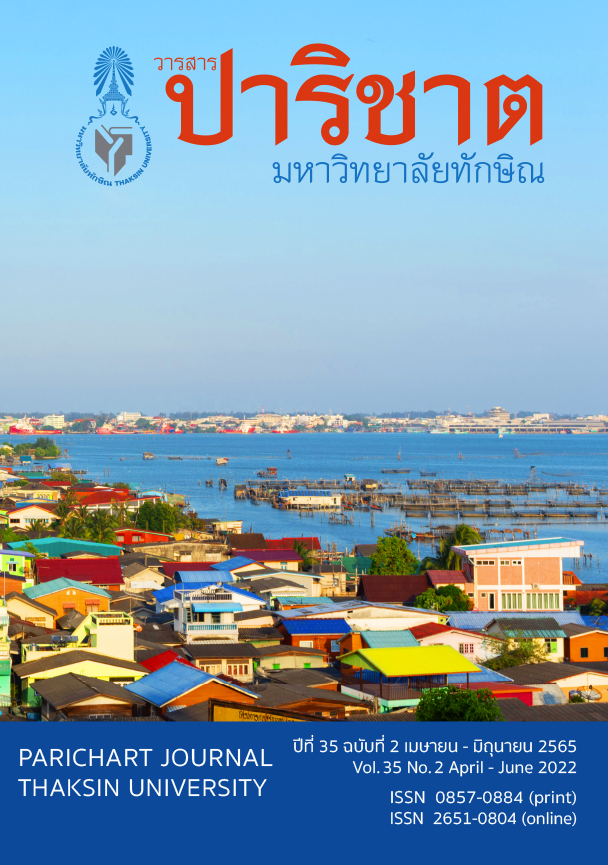Bluest Eyes: Black People and a Quest for the Lost Identity
Main Article Content
Abstract
This article aimed to study characters in Toni Morrison’s novel “Bluest Eyes” on the aspects of being treated as a marginal person, a quest for identity, and constructing meaning. The documentary research method was employed based on the concept of marginal people and presented via a descriptive analysis method. The study results reflected the cultivated belief in skin color discrimination in enhancing the value of white people as the stereotyped beauty while degrading black people as ugliness. As for spaces and constructing identity of black people, it was viewed in terms of social space which was a gap between white and black people; geographical space was skin color discrimination, and spiritual space was related to the roots of African-Americans. These were the criteria, which were established to evaluate the value of human beings. Peola Breedlove, created by the author, was a stereotyped African-American who accepted the power of the white’s discourse and defined white characters as being clean or virgin. On the aspect of communication between black people and the world’s society, it was reflected that not all of the black people accepted this stereotyped concept but tried to quest for their identity by grouping and adapting themselves to increase their bargaining power.
Article Details

This work is licensed under a Creative Commons Attribution-NonCommercial-NoDerivatives 4.0 International License.
References
Thanakorn, P. (2014). An analysis of marginal characters in a Thai verse “Khun Chang Khun Phan”: Power, space, and politics in Thai literature. Buriram Rajabhat University Journal, 6(2), 1-24.
Inthanam. T. (2020). Bluest eyes. Library House.
Poolpoem, W. (1997). A study of images of black women in Toni Morrisons Novels. Naresuan University.
Laengratsamee, P. (2000). Alienation of black Americans in Toni Morrison’s Novels. Chulalongkorn Unversity.
Yenbutr, M. (2005). Black female slaves in American Novels. Chulalongkorn University.
Tantanapornchai, Y. (2008). Analysis the status of black women through real life and literature. Thailand Education Journal. 4(29), 29-35.
Inthanam, T. (2012). Space and the construction of African American identity in Toni Morrison’s Song of Soloman. Journal of Liberal Arts, Thammasat University. 12 (1). 57-89.
Phattarakulwit, C. (2016). Magical realism in literary works of Gabriel Garcia Marquez, Toni Morrison, and Thai literature. Read.
Samutkhup, S. & Kit-asa, P. (1999). Anthropology and globalization: Thai experience. Hongthaisuksanithat.
Morrison, T. (2020). Bluest eyes. Library House.
U-thit Haemamool. (2020). Beloved. Library House.
Sawangnate, S. (2014). Negative stereotypes of the black and social commentary in Kara Walker’s Silhouettes. Veridian E-Journal. 7(3), 1406-1419.
Wankeaw, S. (2007). Marginal people: From thought to reality. Chulalongkorn Unversity.
Phothiwan, P. (2011). Identity, sub-cultural and social space of transgender. Damrong Journal, 10(1), 98-125.
Kaewtankham, C. (2018). Reflection of otherness of marginal people in collection of short stories “Bang Phrai Heang Sap Cham Pa and Other Stories”. Wiwitwansan Journal, 2(1), 111-128.
Uthaisri, N. (2016). Human rights and the United Nations: Skin color discrimination in U.S.A in 1960s. Kasem Bundit Journal, 17(2), 87-95.


